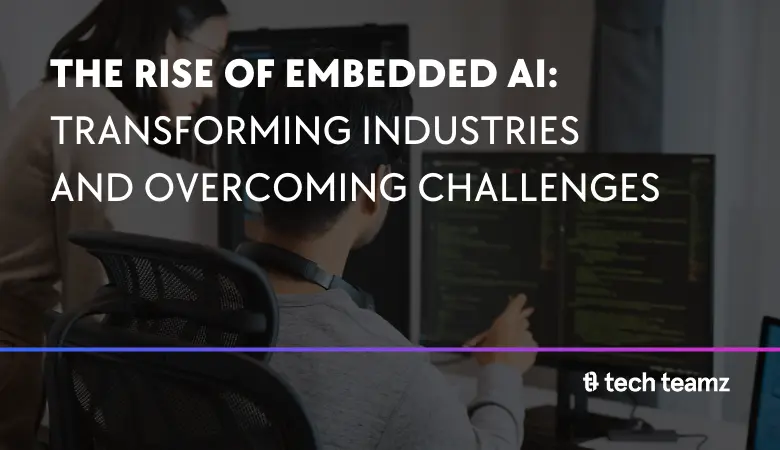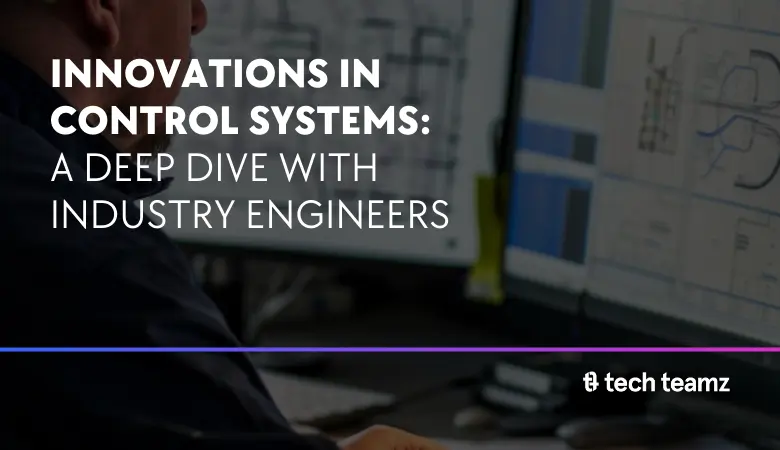Artificial Intelligence is changing the world of technology as we know it. The way devices process data and make decisions evolves with these changes. As a result, we must consider the benefits, the challenges, and the real-life implementations of embedded AI.
Embedded engineers Nathalia Rodríguez and Francisco Javier Molinero Chasco gave us a powerful understanding of how this process works and what we can expect from it.
Understanding Embedded AI
Devices with embedded AI are enabled to analyze data locally and make decisions without having to rely on external processing. This is a clear shift toward edge computing, which allows for optimization resources and reduces latency, aside from making networks increasingly configurable.
IoT devices particularly benefit most from AI integration, because this tech brings power efficiency and real-time processing with it. The numbers agree. The embedded AI market is expected to grow to 18 billion by 2028.
As software engineer Nathalia Rodriguez put it, “One of the key benefits of embedded AI chips is the power efficiency and real-time processing. The savings are reflected in terms of money for the companies. Embedded chips with AI accelerate tasks and perform those computation workloads locally.”
This means that, since the devices don’t need the cloud to perform complex calculations, they save a lot of time. Embedded AI chips, with specialized hardware like TPUs, are designed for AI tasks while minimizing energy consumption.
Security in Embedded AI
With 77% of companies experiencing security breaches, keeping embedded systems secure is crucial. These devices handle critical data, so incorporating robust security measures from the initial design stages to ensure data integrity and protection against evolving threats is essential.
According to embedded engineer Javier Molinero, embedded systems already have a solid security infrastructure. Other systems “have more vulnerabilities and are more exposed to some attacks”, mainly because they’re very close to the user. Embedded systems are safer because they’re not as close to the user in the first place.
Devices that use embedded AI have security measures in place from the get-go, both for software and hardware and from the low to the top level.
At the low level, Javier states that we have the encrypted register, for example, while on the top level, there are security algorithms for the network.
When you consider the security level already existing in embedded systems, it’s possible to take advantage of opportunities to adapt this technology to Artificial Intelligence and keep everything as safe as possible.
Real-life uses for AI chips
Embedded AI chips can be customized for specific AI models and particular tasks. Some of the key applications include:
- Healthcare, for detecting diseases, predicting risks, and monitoring chronic conditions such as diabetes.
- Manufacturing, especially when it comes to quality control, inspection systems, and predictive maintenance.
- Intelligent transport, for managing congestion in traffic, predicting traffic patterns, and detecting accidents.
Challenges and solutions for embedded AI
Some people in the industry think the chip shortage crisis is ongoing, despite others claiming it ended in 2023. Research predicted that the global semiconductor market will have a value of US$ 736.4. billion by 2027, which means that the industry is still going strong despite the issues it faced not too long ago.
According to Javier, the embedded AI industry suffered because of this semiconductor shortage, but at the same time, some companies took it as a challenge to overcome with alternative materials and more innovation, even at a slower pace. Natalia claims that software can adapt to already existing chips so that the industry doesn’t strain under the demand. Both of them see an optimistic future for the embedded industry, especially with companies continuing to push for more innovation and efficiency.
Final thoughts
Embedded AI is bound to unlock new levels of autonomy across industries, despite having its own set of challenges to deal with. Collaboration, and above all investment in R&D are crucial if we want to continue pushing forward.
What are your thoughts on this? Is the embedded AI industry promising?




